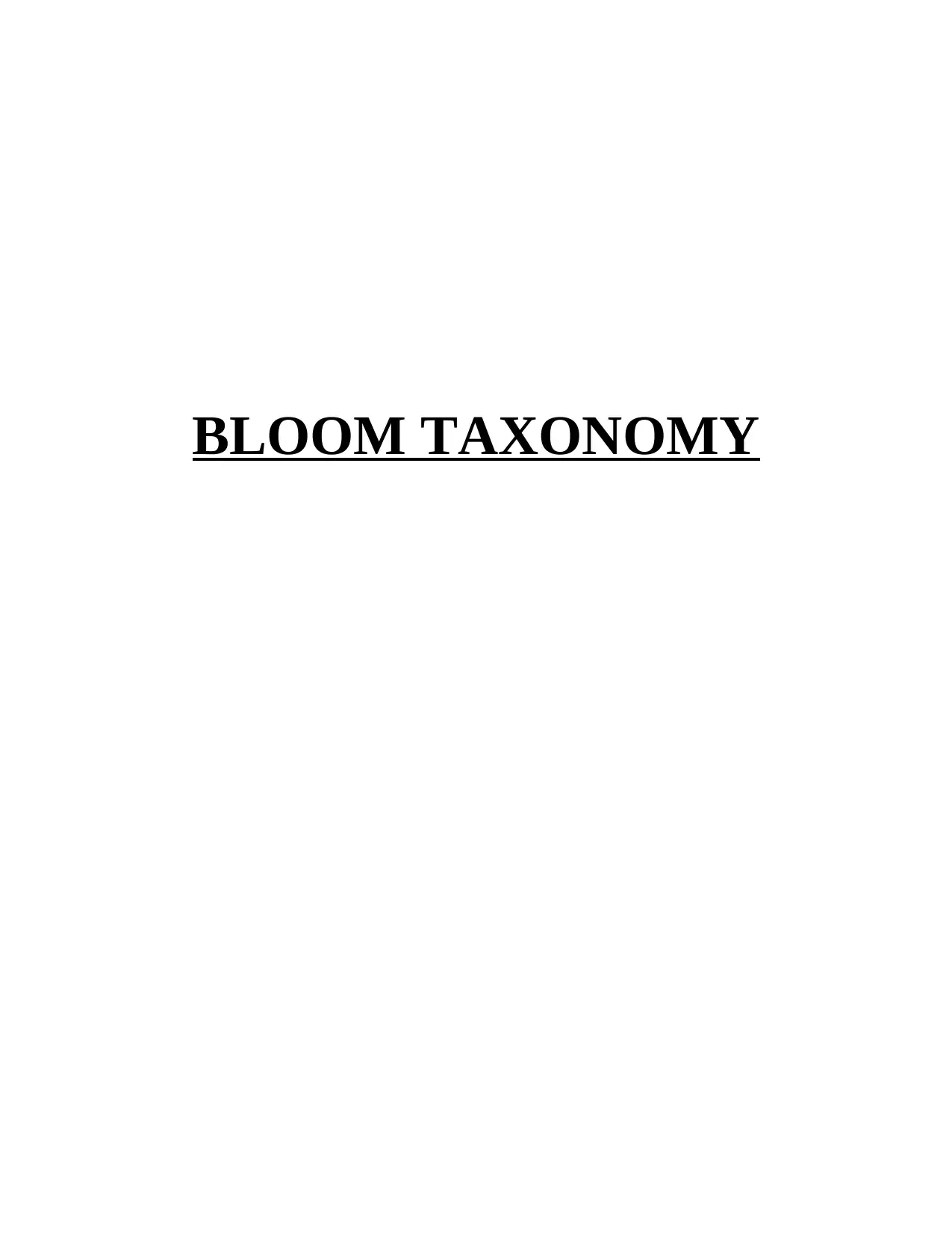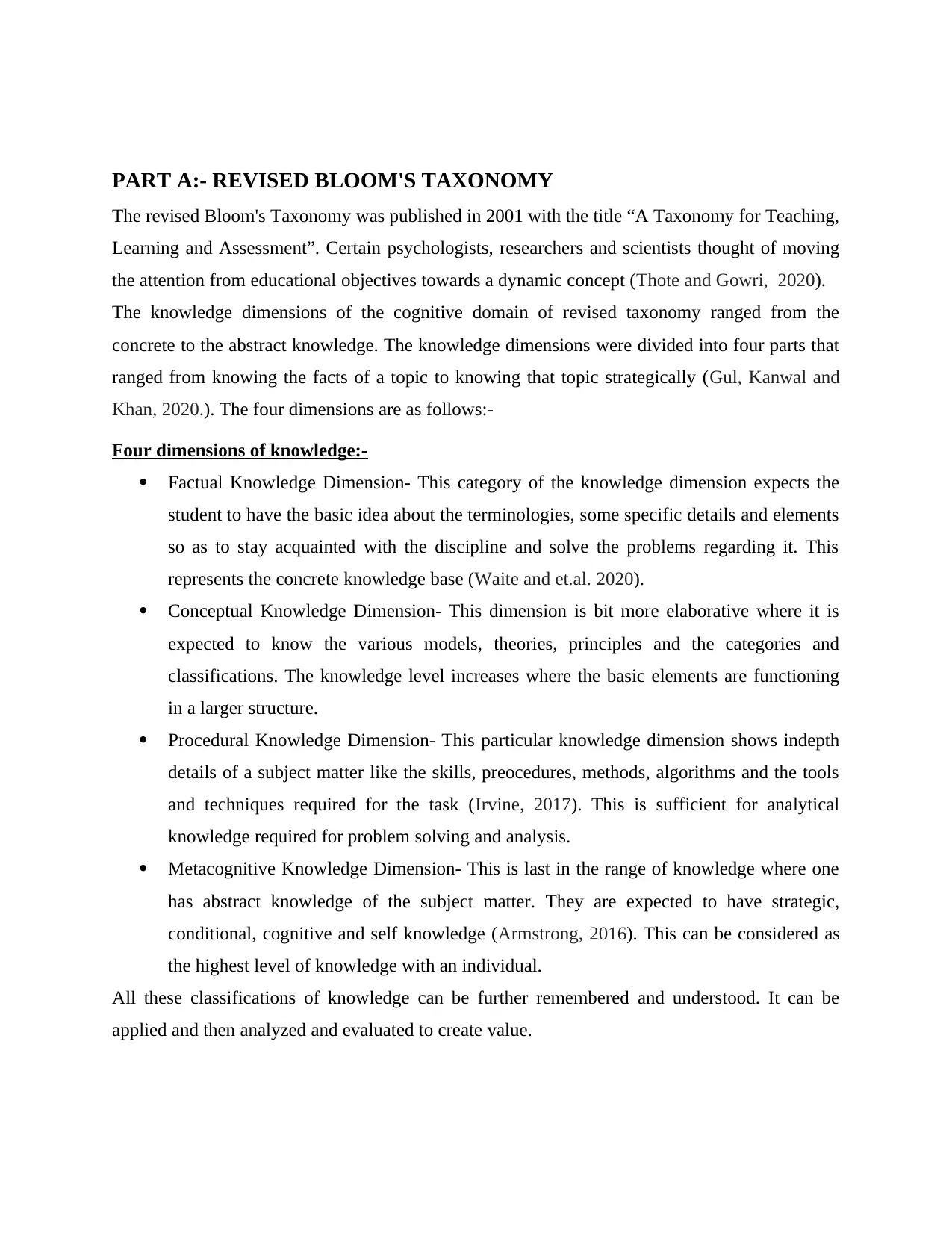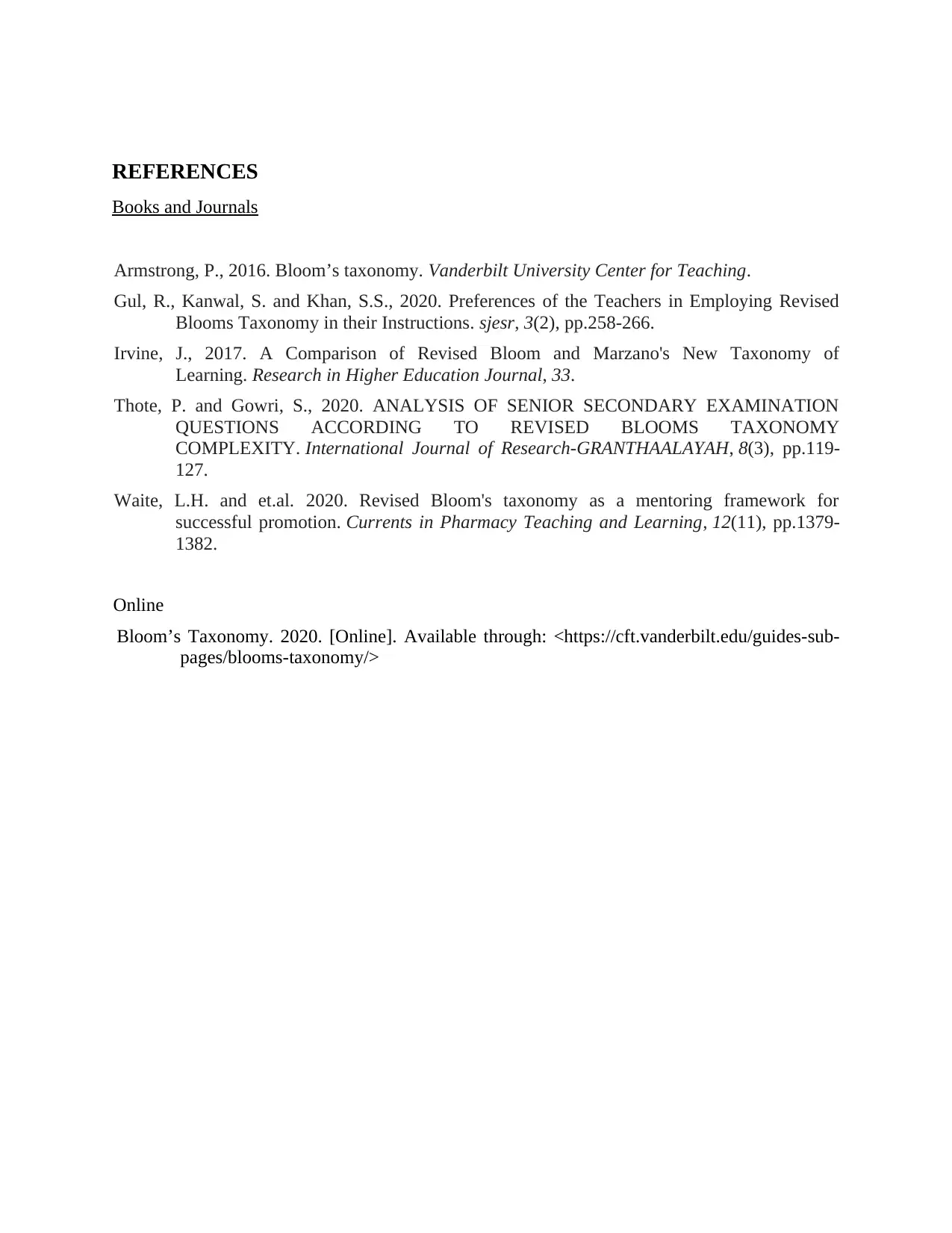Analysis of Bloom's Taxonomy: Dimensions of Knowledge in Education
VerifiedAdded on 2022/12/30
|4
|552
|90
Homework Assignment
AI Summary
This assignment provides an overview of the revised Bloom's Taxonomy, focusing on the four dimensions of knowledge as outlined by Anderson and Krathwohl (2002). It describes factual knowledge as the basic understanding of terminologies and specific details, representing concrete knowledge. Conceptual knowledge involves understanding models, theories, and classifications, building upon the basic elements in a larger structure. Procedural knowledge delves into the skills, methods, and techniques needed for a task, sufficient for analytical problem-solving. Lastly, metacognitive knowledge represents abstract knowledge, encompassing strategic, conditional, and self-knowledge, considered the highest level of understanding. The document provides a clear explanation of each dimension, supported by references to relevant literature.
1 out of 4





![[object Object]](/_next/static/media/star-bottom.7253800d.svg)